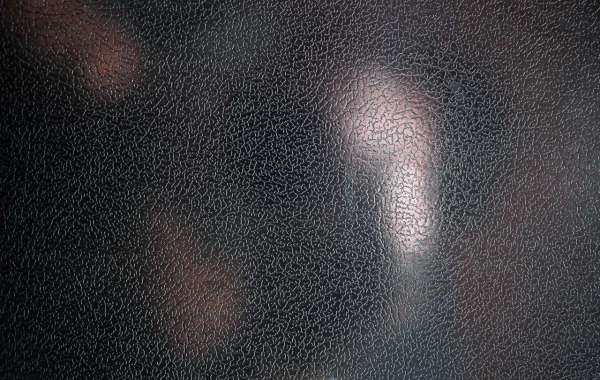Triplex cables are commonly used in electrical installations, particularly for overhead power distribution. Understanding the key components and specifications of triplex cables is crucial for electrical engineers, technicians, and anyone involved in electrical infrastructure. This discussion will delve into the primary aspects of triplex cable, focusing on their structure, materials, and specifications without touching upon their advantages or differences from other types of cables.
1. Structure of Triplex Cable
Triplex cables consist of three conductors twisted together and typically surrounded by a weather-resistant outer sheath. The twisted configuration of the conductors helps to reduce electromagnetic interference and mechanical stress on the individual wires. The three conductors in a triplex cable usually include:
- Two Conductors (Phase Conductors): These conductors carry the electrical current from the power source to the load. They are typically made of aluminum or copper due to their excellent conductivity.
- One Conductor (Neutral Conductor): The neutral conductor provides a return path for current. It is essential for maintaining the balance in the electrical system and is also made of aluminum or copper.
The standard arrangement of these conductors ensures that they are evenly spaced, which minimizes the potential for induction between them and allows for a more uniform current distribution.
2. Materials Used in Triplex Cables
The materials used in triplex cables play a crucial role in their performance, safety, and longevity. The main components include:
Conductor Material: Most commonly, triplex cables utilize aluminum conductors due to their favorable weight-to-conductivity ratio. Aluminum is less expensive than copper, lighter, and sufficiently conductive for most applications. In some cases, copper conductors may be used, particularly in high-current applications where their superior conductivity is advantageous.
Insulation Material: The conductors in a triplex cable are insulated with materials such as Cross-Linked Polyethylene (XLPE) or Polyvinyl Chloride (PVC). XLPE is preferred for its high thermal resistance and excellent electrical properties, making it suitable for a variety of environmental conditions. PVC, while less thermally resistant than XLPE, is often chosen for its lower cost and adequate insulation properties.
Outer Sheath Material: The outer sheath protects the inner conductors and insulation from environmental factors such as moisture, UV radiation, and mechanical damage. Common materials for the outer sheath include PVC and thermoplastic elastomers, which offer good weather resistance and flexibility.
3. Specifications of Triplex Cable
Several specifications define the performance and application suitability of triplex cables. Understanding these specifications is essential for selecting the right cable for a given installation:
Voltage Rating: Triplex cables are available in various voltage ratings, commonly ranging from 600V to 35kV. The voltage rating determines the maximum voltage that the cable can safely handle without risk of insulation breakdown. When selecting a triplex cable, it is crucial to choose one with a voltage rating that meets or exceeds the requirements of the specific application.
Conductor Size: The size of the conductors in a triplex cable is typically measured in American Wire Gauge (AWG) or circular mils (CM). The conductor size is directly related to the current-carrying capacity of the cable. Larger conductors can carry more current but are also heavier and more expensive. Therefore, proper sizing is essential to ensure that the cable can handle the expected load without overheating.
Ampacity: Ampacity refers to the maximum amount of electric current a conductor or cable can carry before its temperature exceeds safe limits. Triplex cables are rated for specific ampacity values based on factors like conductor size, insulation type, and installation conditions (e.g., whether the cable is in air, buried underground, or bundled with other cables). Understanding the ampacity of a triplex cable is crucial for preventing overheating and ensuring safe operation.
Temperature Rating: The temperature rating of a triplex cable indicates the maximum and minimum temperatures at which it can operate safely. Common temperature ratings for triplex cables include 90°C for wet locations and 75°C for dry locations. Selecting a cable with the appropriate temperature rating for the installation environment is vital to ensure reliability and longevity.
Environmental Ratings: Triplex cables may also be rated for specific environmental conditions, such as exposure to moisture, chemicals, or UV radiation. These ratings ensure that the cable can withstand the conditions of its intended installation environment without degrading or losing functionality over time.
4. Applications of Triplex Cables
Triplex cables are primarily used in overhead power distribution systems, particularly for connecting transformers to service drops in residential areas. Their compact design and efficient transmission capabilities make them suitable for urban and rural installations alike. Some typical applications include:
Service Drop Connections: Triplex cables are often used to connect overhead power lines to residential and commercial buildings. This application requires cables that can withstand outdoor conditions, making the durability and weather resistance of triplex cables particularly important.
Feeder Lines: In distribution networks, triplex cables can be used as feeder lines to supply power from substations to transformers. Their ability to carry substantial current while maintaining compactness makes them ideal for this purpose.
Utility Installations: Electric utility companies frequently use triplex cables for new installations and upgrades to existing infrastructure. The cables' design allows for easier handling and installation, making them a preferred choice in many scenarios.
5. Standards and Compliance
Triplex cables must meet various industry standards to ensure safety and reliability. In the United States, the National Electrical Code (NEC) provides guidelines for cable installation and use, while the American National Standards Institute (ANSI) sets standards for performance and testing. Compliance with these standards ensures that triplex cables are manufactured and installed to meet the necessary safety and performance criteria.
6. Conclusion
Triplex cables are a critical component of electrical distribution systems, providing reliable and efficient power transmission for a variety of applications. Their construction, materials, and specifications contribute to their performance in overhead installations, making them an essential choice for electrical engineers and utility companies. By understanding the key aspects of triplex cables, professionals can make informed decisions about cable selection and installation, ensuring that they meet the demands of modern electrical systems. As power distribution continues to evolve, the role of triplex cables in facilitating efficient and reliable electricity delivery will remain vital.








